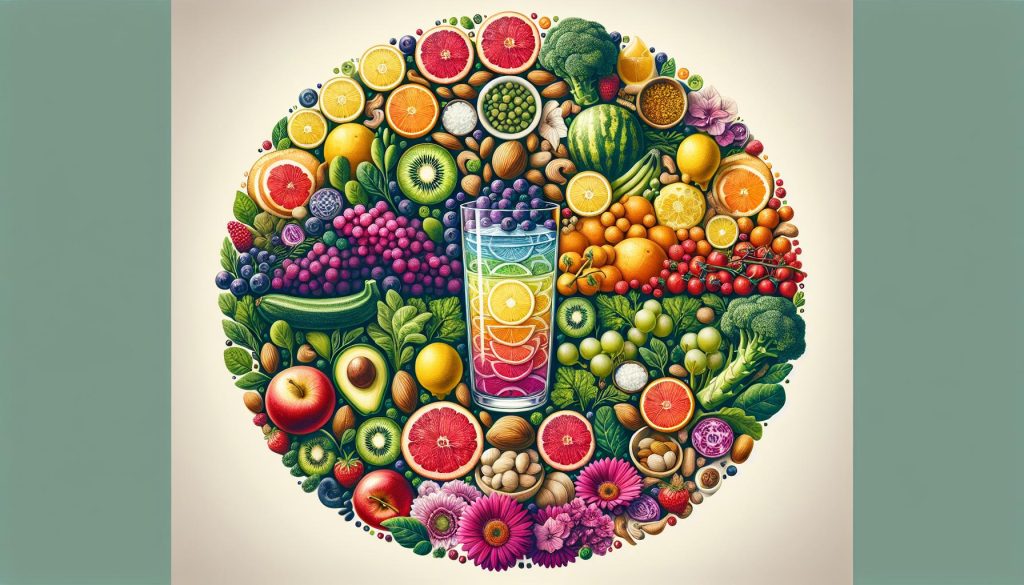Introduction
Have you ever wondered how to add alkaline to your diet? In a nutshell, adding alkaline to your diet involves increasing your intake of fruits, vegetables, nuts, and seeds, while reducing consumption of acid-producing foods such as meat, dairy, and processed foods. By maintaining a balance of alkaline and acidic foods, your body’s pH can be kept in a neutral range, promoting overall wellness. Now, let’s delve into further depth regarding this topic and reveal how to practically apply this dietary concept to your daily life.
What is Alkaline?
Alkaline refers to a spectrum of pH levels that sit above neutral. The pH scale ranges from 0 (highly acidic) to 14 (highly alkaline), with 7 being neutral. Foods are categorised as acidic, alkaline, or neutral, depending on their impact on the body’s pH levels. However, while simplicity screams that citrus fruits like lemons are acidic, ironically, they’re highly alkaline-forming within the body due to their mineral content.
Importance of Alkaline Foods
Alkaline foods play a crucial role in maintaining a pH balanced diet. They detoxify the body, strengthen the immune system and promote optimal health. Incorporating more alkaline foods in your diet can boost your energy levels, improve your digestion, and help in maintaining a healthy weight.
Diving into the Alkaline Diet
The alkaline diet is about living a healthier life by consummating more alkaline-forming foods and curtailing acid-producing foods. An alkaline diet mainly consists of fruits, vegetables, legumes, nuts, seeds, and whole grains. Animal products, processed foods, sugar, and caffeine come under the umbrella of acid-forming foods and hence are less recommended.
Acid vs Alkaline
While it may seem like a struggle to strike the balance between acidic and alkaline foods, it’s vital to understand that it’s not about eliminating one group entirely. The goal is not to completely abandon acidic foods but to find a comfortable balance for your body between these two ends of the pH spectrum.
Increasing Alkaline Food Intake
The idea of adding alkaline to your diet might seem daunting at first, but there’s no need to flip your diet upside down overnight. Start simple: drink plenty of water throughout the day and replace typical snacks with nuts and seeds. Add an extra serving of vegetables to your lunch and dinner. Gradually, your food preferences will lean toward alkaline foods, and your body will reel in the rewards.
Alkaline Food Choices
Increasing alkalinity in your diet doesn’t mean you have to sacrifice flavor. Common examples of delicious alkaline foods include spinach, broccoli, avocado, kale, celery, cucumber, and bell peppers. Fruits such as lemons, oranges, berries, and melons can also add some sweet zest to your alkaline diet.
Maintaining an Alkaline Diet
Modifying your diet can be a mountain of a task, but setting attainable goals and taking progressive steps can make the transition smooth. Remember, it’s about balance rather than an all-or-nothing approach. Eat a predominance of alkaline-forming foods, but don’t deny yourself the pleasure of occasionally indulging in your favorite acidic treats.
Words of Wisdom
Food, as we know, nourishes – but it doesn’t do the work alone. In tandem with a balanced diet, remember to hydrate, engage in regular physical activity, manage stress and get enough sleep. All these elements together harmonize your body, helping you to lead a healthier and happier lifestyle.
Conclusion
In conclusion, adding alkaline to your diet isn’t about a stringent menu but rather, making smarter food choices that tip the balance towards alkalinity. It’s that simple — pleasurable, life-enhancing and ultimately, quite delicious.
Frequently Asked Questions
1. What sort of changes can I expect with an alkaline diet?
While everyone’s experiences vary, commonly reported benefits of an alkaline diet include boosted energy levels, improved skin, better digestion, and weight loss.
2. Can I still eat meat on an alkaline diet?
Yes, you can still consume meat, but the focus should be centered on consuming more alkaline-forming foods.
3. Are there any risks with an alkaline diet?
Generally, the alkaline diet poses few risks. However, it’s always best to consult with a healthcare provider before making any significant dietary changes.
4. How do I know if my body is too acidic?
Symptoms of chronic acidity can include fatigue, weak immunity, weight gain, and poor digestion. If you have concerns, contact a healthcare professional.
5. Are all fruits and vegetables alkaline?
Most fruits and vegetables are alkaline-promoting foods, but not all. Some examples of slightly acidic fruits include blueberries and canned fruit. For vegetables, lentils and olives fall into the slightly acidic category.



